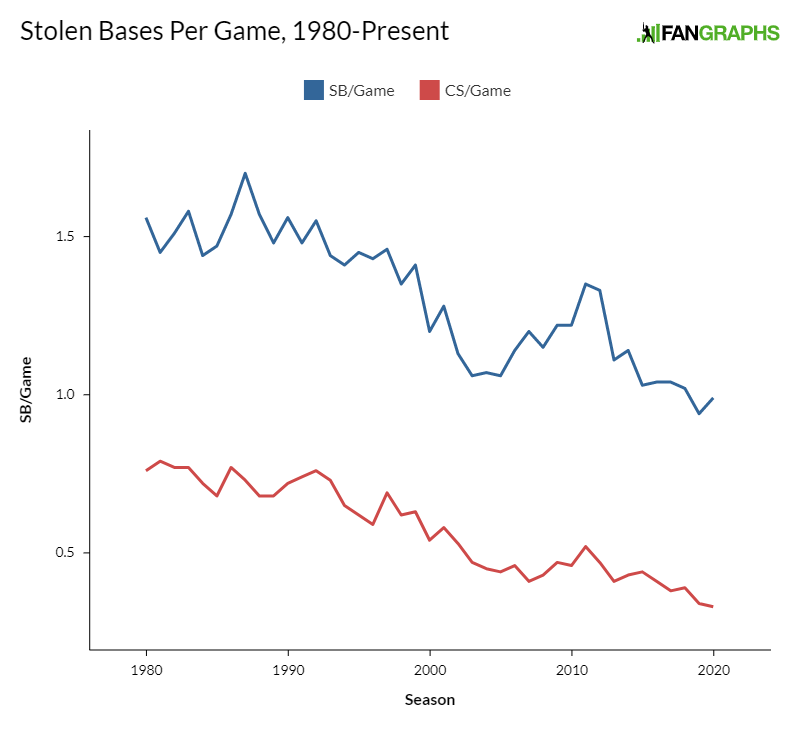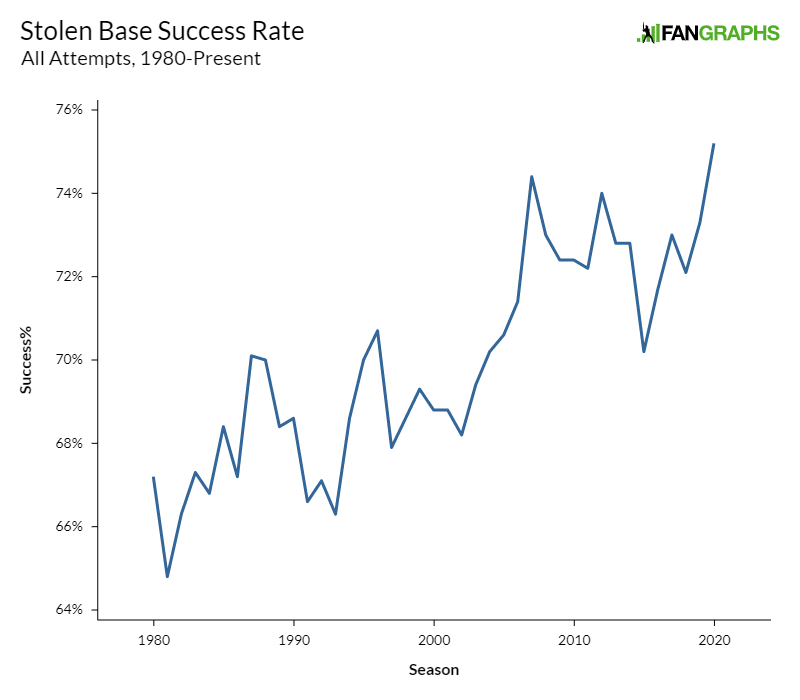Nicky Lopez, Caught Red-Handed
In the 1980s, the stolen base was king. Rickey Henderson and Vince Coleman were absolute terrors on the basepaths, giving pitchers no time to breathe. They each stole 100 or more bases three different times, with Henderson’s 130-steal season standing atop the single-season leaderboard, unlikely to ever be matched. They were hardly the only speedsters, either; Tim Raines stole at least 70 bases in six straight seasons, for example.
That need for speed made a delicious baserunning omelet, but it also cracked its fair share of eggs. In 1980 alone, players were caught stealing 1,602 times. That’s the cost of doing business when you’re going to steal so frequently. If you only attempt to swipe a bag in the 50 best spots to run in a given year, you’ll be successful at a higher rate than if you go 150 times.
As baseball tactics changed, the steal lost favor. First, home runs decreased the value of steals. Put one over the fence, and it doesn’t matter which base the runner was on. Second, teams started to better understand the value of avoiding outs. The exact math varies based on context, but as a rule of thumb, you need to steal three bases for every time you’re caught to provide neutral value. Succeed less than 75% of the time, and you’re costing your team runs in expectation.
These two effects led to a predictable change in behavior. Stolen bases have been in steady decline, while success rate on the attempts that remain heads inexorably higher. In 1980, the average game featured roughly 1.5 steals, and the league-wide stolen base success rate was 67%. In 2020, there was less than one steal per game for the second straight season:

On the other hand, the success rate crested 75% for the first time:

Is this a good development? It all depends on your point of view. Steals are exciting, whether they’re successful or not; they punctuate the stilted and ponderous pace of the game with a jolt of pure adrenaline. On the other hand, there’s nothing more frustrating than seeing your team run themselves out of an inning or seeing a baserunner caught directly before a home run.
Read the rest of this entry »
